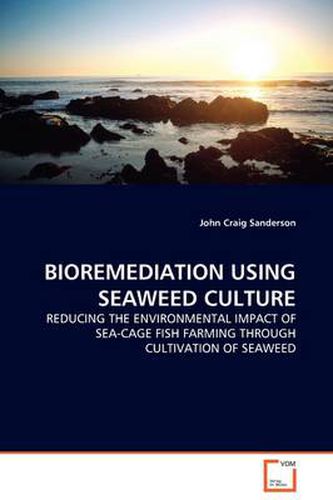Readings Newsletter
Become a Readings Member to make your shopping experience even easier.
Sign in or sign up for free!
You’re not far away from qualifying for FREE standard shipping within Australia
You’ve qualified for FREE standard shipping within Australia
The cart is loading…






This title is printed to order. This book may have been self-published. If so, we cannot guarantee the quality of the content. In the main most books will have gone through the editing process however some may not. We therefore suggest that you be aware of this before ordering this book. If in doubt check either the author or publisher’s details as we are unable to accept any returns unless they are faulty. Please contact us if you have any questions.
The rapid growth in sea-cage fish farming in the UK, particularly in Scotland and Ireland, and the extent to which intensive aquaculture results in degradation of the surrounding environment has been the subject of continued speculation and investigation. Growing seaweed crops is a possible means of reducing possible environmental impact through utilisation of excess nutrients. Cultivation of two seaweed species with commercial potential: Laminaria saccharina and Palmaria palmata or ‘Dulse’ was trialled at three fish farm sites in north-west Scotland. Yields were greater close to fish farms and showed that under optimal conditions, a hectare of P. palmata would yield up to 180 tonnes and a hectare of L. saccharina 220 tonnes wet weight per annum which would be the equivalent of at least 13 % and 5 % of the nitrogen respectively emitted from the production of 500 tonne of salmon over the two year period the salmon are at sea. This book reviews seaweed and fin fish culture and related nutrient dynamics in cool temperate waters and would be of interest to environmentalists and those considering fish and or seaweed aquaculture.
$9.00 standard shipping within Australia
FREE standard shipping within Australia for orders over $100.00
Express & International shipping calculated at checkout
This title is printed to order. This book may have been self-published. If so, we cannot guarantee the quality of the content. In the main most books will have gone through the editing process however some may not. We therefore suggest that you be aware of this before ordering this book. If in doubt check either the author or publisher’s details as we are unable to accept any returns unless they are faulty. Please contact us if you have any questions.
The rapid growth in sea-cage fish farming in the UK, particularly in Scotland and Ireland, and the extent to which intensive aquaculture results in degradation of the surrounding environment has been the subject of continued speculation and investigation. Growing seaweed crops is a possible means of reducing possible environmental impact through utilisation of excess nutrients. Cultivation of two seaweed species with commercial potential: Laminaria saccharina and Palmaria palmata or ‘Dulse’ was trialled at three fish farm sites in north-west Scotland. Yields were greater close to fish farms and showed that under optimal conditions, a hectare of P. palmata would yield up to 180 tonnes and a hectare of L. saccharina 220 tonnes wet weight per annum which would be the equivalent of at least 13 % and 5 % of the nitrogen respectively emitted from the production of 500 tonne of salmon over the two year period the salmon are at sea. This book reviews seaweed and fin fish culture and related nutrient dynamics in cool temperate waters and would be of interest to environmentalists and those considering fish and or seaweed aquaculture.